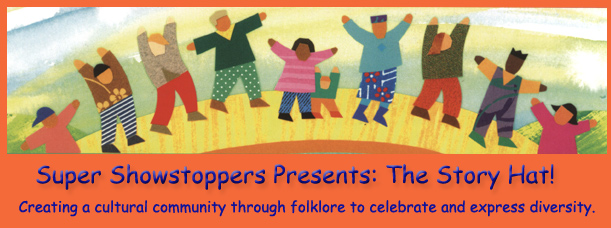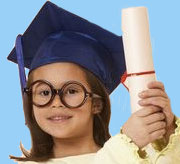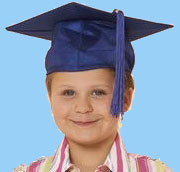


|
|
How Our
Story Theater Programs Apply Performance Arts State Standards (VAPA) Overview 1.0 Artistic Perception: Processing, Analyzing, and Responding to Sensory Information
Through the Language and Skills Unique to Theatre. 2.0 Creative Expression: Creating, Performing, and Participating in Theatre. 3.0 Historical Context: Understanding the Historical Contributions and Cultural
Dimensions of Theatre. 4.0 Aesthetic Valuing: Responding to, Analyzing, and Critiquing Storytelling
and Theatrical Experiences. 5.0 Connecting Relationships: Connecting and Applying What Is Learned in Theatre,
Film/Video, and Electronic Media to Other Art Forms and Subject Areas and to
Careers. Overview of Application of State Standards: K-5 Artistic Perception: Students
participate in Story Theater, enacting parts of the stage, character, script,
improvisation, beginning, middle, end, story plot, real vs. fantasy and the
Five Ws. Creative Expression: Students act in Story Theater, theater
movement and games and create characters in gesture, voice and emotion.
Historical Context: Multicultural folktales are performed and origins
discussed, enacting significant events in history. Aesthetic Valuing:
Discussions after performances of stories: how students feel or relate to
characters, comparing genres, lessons in tales and audience member
participation. Connecting Relationships: Students perform folktales in
Story Theater participating in acting, role playing, teamwork, prop mastery
and socialization skills. Click
links to view how program applies Performance
Arts state activities per grade: Pre-K and
Kindergarten: Performance Arts Grade 4 and 5: Performance Arts **** Pre-Kindergarten and Kindergarten:
Performance Arts: 1.0
Artistic Perception Pre-K:
Students learn and participate in terms: pretend, movement and audience. Kindergarten:
Students demonstrate and define five
senses, actor and audience. Kindergarten: Storyteller
demonstrates real vs. imaginary characters in stories. 2.0
Creative Expression Pre-K: Students perform call
and response in tales w/ storyteller. Kindergarten:
Class engages in theater movement. Example: mimic and freeze games. Both grades: Students
recreate the story told in Story Theater. 3.0
Historical and Cultural Context Pre-K:
Storyteller discusses theater vs. television and use of puppets in tales and
theater. Kindergarten:
Students perform diverse and multicultural folktales. Kindergarten:
Students role play familiar characters/vocations from the story (moms, dads,
teachers etc.). 4.0
Aesthetic Valuing Both grades: Students
practice and respond in being an audience member during telling of tales. 5.0
Connections, Relationships, Applications Pre-K:
Students role-play familiar jobs (police, nurses, doctors etc. and wear the
hat symbol) in Story Theater. Kindergarten:
Students learn teamwork in performing the tale in Story Theater. ------------------------------------------------------------------------------------------------------------------------------------------ 1.0
Artistic Perception Students
participate in theater terms: plot,
beginning, middle, end and character. 2.0
Creative Expression Students
perform fun improvisation: how do your characters act in other situations? Students
perform in Story Theater and identify the beginning, middle and end of tale. 3.0
Historical and Cultural Context Storyteller and students identify
the geographic origins of the folktales (Panama, Mexico, Ireland, India,
etc.). Students
create and use props of the folktale culture as aspects of theater. 4.0
Aesthetic Valuing Students discuss their
favorite part of story after the tale is told. Students communicate feelings
about characters after the tale is told. 5.0
Connections, Relationships, Applications Students
work as a team during Story Theater rehearsals and improvisational games. ----------------------------------------------------------------------------------------------------------------------------------------- 1.0
Artistic Perception Theater vocabulary is
emphasized from Grade 1 plus: conflict
and script and audience. Students
discuss who, what, where, when and why in stories performed. 2.0
Creative Expression Students perform theatrical
games and teamwork in rehearsing stories. Students enact stories and
identify their character and setting. Optional activity can include
creating a cultural hat for their character in the story performances. 3.0
Historical and Cultural Context Storyteller and students
identify the cultural origins and forms of stories told and performed. 4.0
Aesthetic Valuing Students
evaluate performances using the creation of characters by gestures and
movement as criteria. Storyteller and students
discuss morals and lessons in stories. 5.0
Connections, Relationships, Applications Team
cooperation emphasized and demonstrated during rehearsals in Story Theater. --------------------------------------------------------------------------------------------------------------------------------------- 1.0
Artistic Perception Theater
terms learned in Grades 1 and 2 plus: stage
left, right, upstage, downstage and motivation. 2.0
Creative Expression Creating
improvisations from tales told, the students identify the Five Ws in the
tale. 3.0
Historical and Cultural Context Storyteller
and students enact two different cultural versions of the same tale. 4.0
Aesthetic Valuing Students
compare lessons in 2 distinct stories told by storyteller. 5.0
Connections, Relationships, Applications Using
the Five Ws as the core activity, the students use teamwork to perform one of
the stories told. ----------------------------------------------------------------------------------------------------------------------------------------- Grade 4 and
5- Performance Arts 1.0
Artistic Perception Grade
4: Theater terms discussed in Grades 1,2,3 plus: resolution and objective. Grade
5: In addition to above: monologue,
dialogue and sense memory are discussed and enacted. Grade
4: Students demonstrate creative voice and word emphasis in readings during
Story Theater. 2.0
Creative Expression Grade
4: Via Story Theater, students demonstrate emotions in characters (happy,
scared, excited, etc.). Grade
4: Optional prop creation can include students making the hat for their
cultural characters out of classroom or household materials. Grade
5: Actor positions on stage are demonstrated: profile, full back, front, quarter. Grade
5: Students assume other roles in Story Theater: director, writer or prop
master. 3.0
Historical and Cultural Context Grade
4 Identify various storytelling traditions of ethnic groups of history in
California. Grade
5: Interpret storytelling forms of the past and present of
diverse cultural groups, and how they reflect customs and traditions. 4.0
Aesthetic Valuing Grade 4: How diction, pacing,
gesture, and movement reflect the various cultures in folktales. Grade
5: Enact various devices actors use to convey meaning in Story Theater. 5.0
Connections, Relationships, Applications Grade 4: How diction, pacing,
gesture, and movement reflect the various cultures in folktales. Grade
5: Utilizing Story Theater to enact significant historical events, such as
the creation of the Declaration of Independence. |
|